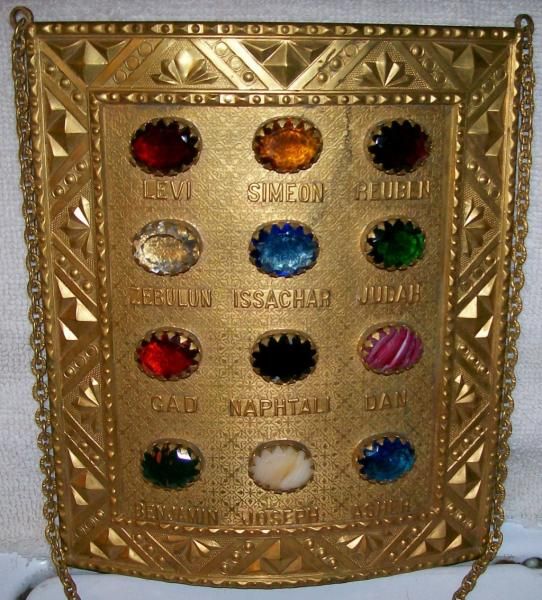Have you ever been curious about the origins of birthstones?
The history, in truth, is a bit long and convoluted. In Western cultures, the concept of the birthstone evolved from a story in the Bible, from the book of Exodus. The prophet Moses decreed that a breastplate should be made for Aaron, his elder brother and the High Priest of the Hebrew people. This breastplate was reputed to have special powers as well.
“… mount four rows of precious stones on it. The first row shall be Carnelian, Chrysolite and Beryl; the second row shall be Turquoise, Sapphir and Emerald; the third row shall be Jacinth, Agate and Amethyst; the fourth row shall be Topaz, Onyx and Jasper. Mount them in gold filigree settings. There are to be twelve stones, one for each of the names of the sons of Israel, each engraved like a seal with the name of one of the twelve tribes.”
Exodus 28:16-20

There is debate about what the actual stones were and they tended to vary depending on the translation used. In addition, because there was little science around gemstone names, they were often named for their colour. So for example, Chrysolite was used to describe any green gemstone, including emeralds and peridot. Jacinth often referred to yellow zircon and Sapphir referred to gemstones with gold flecks, like Lapis Lazuli. That said, based on the gemstones readily available in the region at that time, most scholars believe that the stones were as follows:(1st row) Carnelian, Peridot and Emerald, (2nd row) Garnet, Lapis Lazuli and Quartz, (3rd row) Yellow Zircon, Banded Agate and Amethyst, (4th row) Citrine, Onyx and Green Jasper.
In Eastern culture, birthstones are much more closely tied to astrology and the signs of the zodiac. Thus, in addition to a monthly birthstone you also have a Zodiac birthstone tied to your star sign. The Hindu culture creates an astrological chart for each person at the time of his or her birth. It includes constellations, the sun and the moon as well as the planets. This chart recommends specific gemstones the person should wear to safeguard herself throughout life.
Originally, in both eastern an western traditions each gemstone had specific properties associated with them. The powers ranged from protection to wisdom to wealth and influence. The Roman scholar and philosopher Josephus around 500BC made a connection between the 12 stones of Aaron’s breastplate, the 12 tribes of Israel, the 12 apostles and the 12 signs of the zodiac and suggested that for each month you should wear a different stone to harness it’s mystical properties. Thus it was popular to collect all the stones if you could afford them and to wear one a month.
Bible to Birthstones
At some point, probably in the middle ages, Eastern and Western traditions intermingled and their stones philosophies were shared. The Eastern tradition of stones protecting the wearer came to the West, and people began to believe certain gemstones protected them or strengthened one of their natural attributes. Over time their connection to the stories in the bible were lost and in the 16th century poems were written about each gemstone ascribing them to a particular month. Tiffany & Co even used them in their marketing campaigns.
By the 18th century birthstones began to be recognizable in the lists we have today. Gemstone traders in Poland began to assign a particular stone to a specific month which enabled them to market their gems better. However, lists varied and there was still no standard list.
It wasn’t until the beginning of the 20th century that birthstones became standardised in the west. In 1912, the Jewelers of America met and created a standardized list of birthstones for America (the British National Association of Goldsmiths did the same in 1932 – the two lists are largely the same). Over the years, a few more gemstones have been added but the list hasn’t changed much. Most recently, in 2002 and 2016, tanzanite and spinel became birthstones for December and August respectively.
Whether you prefer to honor a birth month or a sign of the zodiac, there is a beautiful gemstone to represent you and/or your loved ones. Birthstone jewellery makes for a very special birthday gift, or a special piece of jewellery with multiple gems made for a mum in your life. No matter what your spiritual tradition, these gemstones are a meaningful reminder of the special people and days in your life.
Download a copy of the Birthstone Charts including Zodiac Birthstones
What’s your favourite birthstone?